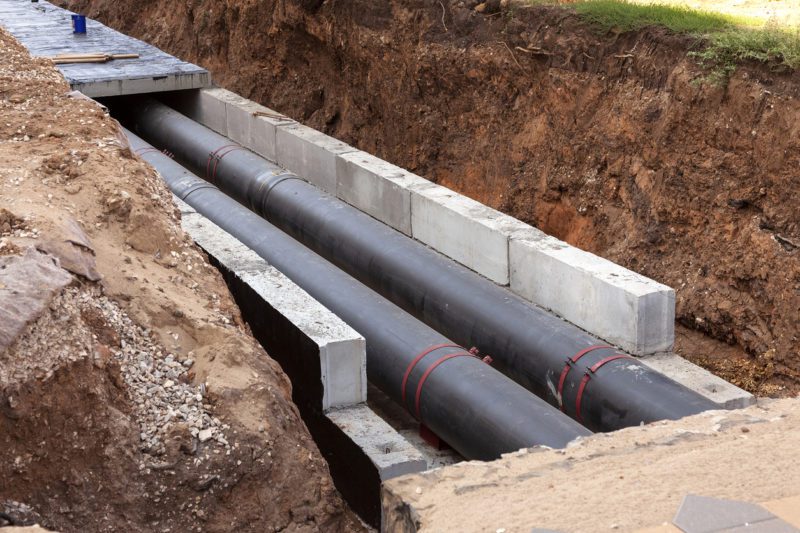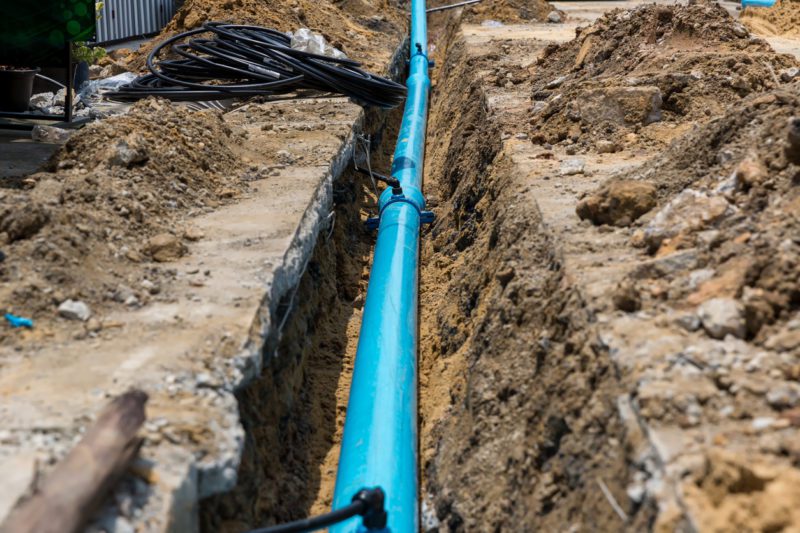This is a good question, and like many good questions, it’s a tricky one to answer. Many factors such as the age of a property influence, the type of underground drainage system in place, and understanding the way the system works in your area will help you decide how to construct your system.
What are the different types of Underground Drainage Systems?
In the UK there are three different types of underground drainage systems:
Surface water underground drainage system
This channels all surface water from rain, down pipes, or gully drains away from the property and into the underground drainage network.
Foul water underground drainage system
This channels all the foul water from sinks, baths, showers, and appliances away from the property and into the underground drainage system.
Combined water underground drainage system
This type of underground drainage system takes all surface and foul water together and channels it away from the property into the underground pipes.
As a rule of thumb, properties built after around 1970 will have a dual drainage system, designed to keep foul and surface water separate, whilst those built earlier will have a combined system.
If you’re working with a combined system, then you will need a trapped gully drain to prevent any foul air from escaping

How to tell whether you have a dual or combined underground drainage system?
Knowing your existing underground drainage system is essential to understand what type of system you need for your new project. As well as knowing the age of the property there are several other ways to identify the system you have.
- The number of manhole covers – Dual systems with drain adaptors often have two manhole covers nearby.
- Sewage in the chamber – if you see sewage in the inspection chamber when you lift the cover then that shows you have a combined system. This may be particularly prevalent around underground drainage bends.
- Depth of underground pipes – in a dual system, the foul water underground pipes are always lower, to prevent contamination in the event of a pipe fracture.
What are the different parts of an underground drainage system?
Once you know what type of underground drainage system you’re working with, you can assemble your parts and equipment. The underground pipes used for drainage systems are brown. You must use the designated type of underground pipes for easy identification when other works are being carried out. Depending on the layout of your system, you’ll need the following underground pipes:
Plain end drain underground pipes
These are chamfered for ease of installation and are supplied in lengths of 3m or 6m.
Drain couplers
These underground pipes allow you to join two pipes or plain fittings together. You can seal and lubricate to ensure sound installation.
Standard bends
Standard bends allow you to change pipe direction. They are supplied in single or double-socket varieties at 15, 30, 45, and 90-degree angles.
Rest bends
These underground pipes allow you to connect ground-floor outlets to underground drains.
Gully drain
A gully drain allows you to filter gases and noxious fumes from the pipes which are connected to underground drainage systems and for surface water collection.
Inspection chambers
Inspection chambers provide you with access to runs of pipe for maintenance.
Underground drainage systems are subject to a rigorous inspection by building inspectors so you must be familiar with the regulations around the size, type, and depth of pipe needed for your underground drainage system. You can find out more about the regulations in the Approved Document H – Drainage and Waste Disposal.

Other things to consider when designing your underground drainage system
- Plan where the major underground pipes, drain pipe junction, and inspection chambers will fit
- Dig trenches following the most up-to-date guidelines and standards, which are found on the government’s website
- Use silicone lubricant to join your pipes
- Use pea shingle and suitable backfill material to cover the pipes
It’s essential to use the best quality components you can. Underground drainage is one of the most important aspects of your project. If the underground drainage system fails it will have a significant impact on the integrity of the building, public health, and the surrounding environment.
Ask the experts
Designing and installing a system can be one of the more challenging aspects of a building. Choosing a building materials supplier with knowledge and experience means you can be sure that you are getting the right materials, equipment, and tools to do the job and JTD Building Supplies have everything you need and more. Get in touch today.
